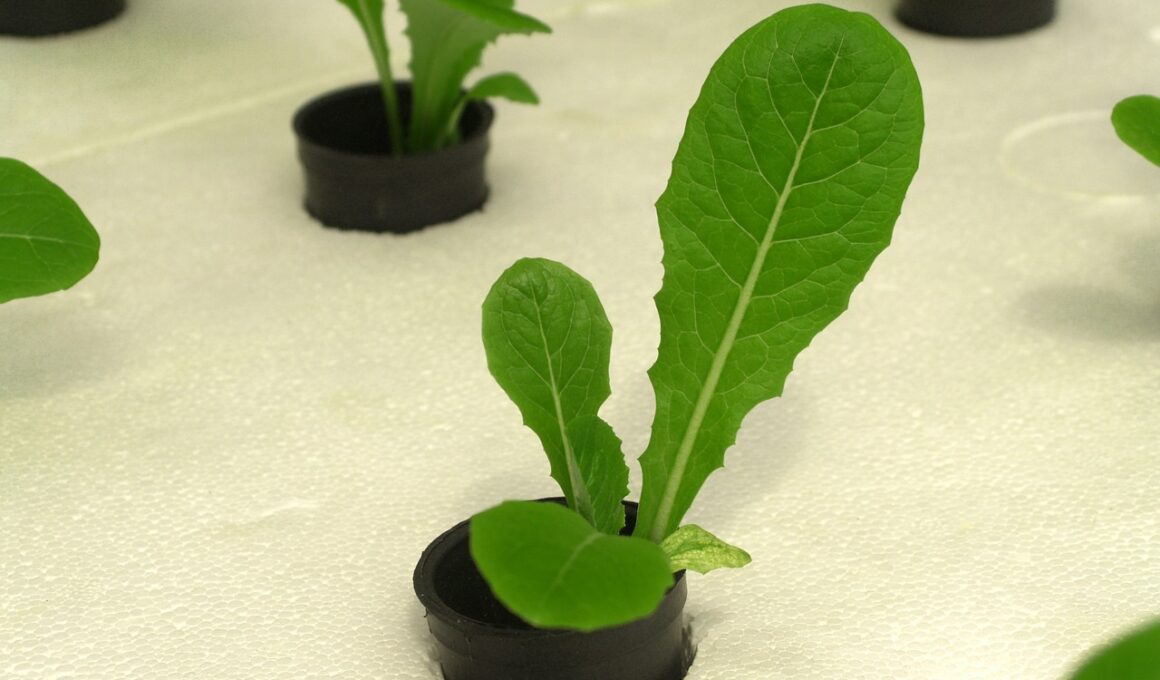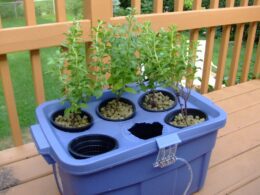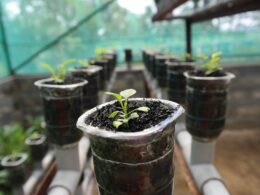Are you interested in hydroponic gardening but unsure about the cost? Hydroponic gardening is a soilless method of growing plants that uses nutrient-rich water instead. It’s a great way to grow fresh produce year-round, especially if you have limited space or live in an area with harsh weather conditions.
But how much does a hydroponic system cost? The answer depends on several factors, such as the type of system you choose, the size of your setup, and the quality of materials you use. While some hydroponic systems can be expensive, there are ways to save money without sacrificing quality.
In this article, we’ll explore the different types of hydroponic systems, factors that affect the cost, and tips for saving money on your setup.
Introduction to Hydroponic Gardening
Get ready to discover a game-changing method for growing plants that’s easy, efficient, and perfect for any curious gardener out there! Hydroponic gardening is a soil-free way of growing plants that uses a nutrient-rich solution to deliver minerals and oxygen to the roots. This method has several benefits, including a higher yield, faster growth, and less water consumption compared to traditional soil gardening.
Hydroponic gardening is a revolutionary way of growing plants that uses a controlled environment to enhance plant growth. Unlike traditional soil gardening, hydroponic gardening eliminates the need for soil, which can harbor pests and diseases. Instead, plants are grown in a nutrient-rich solution that provides all the necessary minerals and oxygen for healthy growth.
Compared to traditional soil gardening, hydroponic gardening can produce up to three times the yield in the same amount of space. It also allows for faster growth, as plants receive more nutrients and oxygen than they would in soil. Additionally, hydroponic gardening uses 90% less water than soil gardening, making it an environmentally friendly option.
With all these benefits, hydroponic gardening is a game-changer for plant enthusiasts looking to maximize their yield and minimize their environmental impact.
Types of Hydroponic Systems
If you’re looking to experiment with some greenery indoors, there are a variety of hydroponic setups available to choose from.
One type of hydroponic system is known as vertical farming, where the plants are grown in stacked layers using artificial lighting. This method is ideal for those with limited space and can produce a high yield of crops.
Another type of hydroponic system is the nutrient film technique (NFT), where a thin film of nutrient solution flows over the roots of the plants. This method is cost-effective and easy to set up, but it requires careful monitoring to ensure the solution is flowing correctly.
Lastly, there is the deep water culture (DWC) system, where the plants are suspended in a nutrient solution with their roots submerged in it. This method is simple and effective, but it requires more maintenance to keep the solution properly oxygenated.
Overall, the type of hydroponic system you choose should be based on your available space, budget, and level of expertise. Consider researching different methods and experimenting to find the one that works best for you.
Factors Affecting the Cost of a Hydroponic System
When it comes to the cost of a hydroponic system, there are four key factors that can affect the price.
The first factor is the size of the system, as larger systems will generally cost more.
The second factor is the type of system, as some systems are more complex and require more materials.
Finally, the materials used and the crops grown can also impact the cost.
Adjust the paragraph structure in the Input to logically group complete sentences on their own lines, with a double new line after. Use contractions.
System Size
You’ll love exploring the various sizes of hydroponic setups available to find the perfect fit for your needs. When considering the size of your hydroponic system, keep in mind that larger systems will generally cost more upfront, but can also be more efficient in terms of space requirements and yield potential.
However, if you have limited space or are just starting out with hydroponics, a smaller system may be a better option. A smaller system may also be more affordable, allowing you to experiment with hydroponics without breaking the bank. Depending on the type of plants you want to grow and the amount of space you have available, a small hydroponic system can cost as little as a few hundred dollars.
However, keep in mind that smaller systems may require more frequent maintenance and can have a lower yield potential compared to larger setups. Ultimately, the size of your hydroponic system will depend on your goals, budget, and available space.
Type of System
To determine the perfect hydroponic system, you need to consider the type of setup that works best for your plant preferences and available space. There are various types of hydroponic systems, and each one has its unique benefits and drawbacks.
One option is vertical farming, which involves stacking plants to take advantage of vertical space. This system is ideal for those with limited space.
Another consideration is the use of nutrient solutions. These solutions contain all the necessary minerals and nutrients that plants need to grow. The type of system you choose will determine the nutrient solution you use. For example, a deep water culture system requires a solution that can float the plant’s roots, while a drip system requires a solution that can be dripped onto the roots.
Ultimately, the type of hydroponic system you choose will depend on your plant preferences, space limitations, and budget.
Materials Used
Now, let’s talk about the materials used in hydroponic systems and how they can affect the growth of your plants. Choosing the right materials can make all the difference in the world when it comes to the success of your hydroponic system.
Here are three important things to consider when it comes to the materials used in your hydroponic system:
-
Cost comparison: It’s important to weigh the cost of the materials against their effectiveness. While cheaper materials may seem like a good idea, they may not be as durable or efficient as more expensive options. It’s important to do a cost comparison before making any purchases to ensure you’re getting the best value for your money.
-
DIY options: There are many DIY options when it comes to materials for hydroponic systems. Using recycled materials like PVC pipes or food-grade buckets can save you money and reduce waste. However, it’s important to make sure that any materials you use are safe for your plants and won’t introduce any harmful chemicals into your system.
-
Efficiency: The materials used in your hydroponic system can affect the efficiency of your system. For example, using high-quality pumps and air stones can ensure that your plants receive the proper amount of oxygen and nutrients. It’s important to choose materials that are designed specifically for hydroponic systems and are known to be effective.
By considering these factors, you can choose the best materials for your hydroponic system and ensure the success of your plants.
Crops Grown
The variety of crops that can be grown in a hydroponic setup is impressive. From leafy greens like lettuce and spinach to fruits like strawberries and tomatoes, there is no shortage of options for those looking to grow their own produce.
This is especially true in vertical farming, where crops can be stacked on top of each other to maximize space and yield.
In addition to being able to grow a diverse range of crops, hydroponic systems also promote sustainable agriculture. By using less water and eliminating the need for pesticides and fertilizers, these setups are more environmentally friendly than traditional farming methods.
Plus, with the ability to grow crops year-round regardless of weather conditions, hydroponic systems can help reduce the carbon footprint of produce transportation.
Overall, the cost of a hydroponic system may vary based on the crops being grown, but the benefits of sustainable agriculture and fresh, homegrown produce are priceless.
Cost Breakdown of Different Hydroponic Systems
Take a look at the breakdown of expenses for various types of hydroponic setups. When it comes to DIY options, the cost for a basic setup can range from $50 to $500. This includes materials such as PVC pipes, net cups, and a water pump. However, keep in mind that maintenance costs can add up over time, especially if you need to replace any equipment or nutrients.
If you’re looking for a more advanced hydroponic system, you can expect to pay anywhere from $500 to $5,000. This includes systems such as ebb and flow, drip irrigation, and nutrient film technique (NFT). While this may seem like a hefty investment, these systems often have a higher yield and require less maintenance in the long run. Additionally, some systems come with automated features that can help regulate temperature, pH levels, and nutrient delivery.
For commercial hydroponic setups, the cost can range from $10,000 to $100,000 or more. This includes large-scale systems such as deep water culture (DWC), aeroponics, and vertical farming. These setups often require specialized equipment and a team of professionals to maintain. However, the high yield and efficiency of these systems can make them a profitable investment for businesses looking to produce crops on a larger scale.
Tips for Saving Money on a Hydroponic System
You can save money on your hydroponics setup by implementing these cost-saving tips. First off, consider opting for a DIY option instead of buying a pre-made kit. This will give you the flexibility to use materials you already have and customize your setup to your liking.
Additionally, you can save money by purchasing secondhand equipment. Look for online marketplaces or local classifieds to find deals on used hydroponic equipment. Another way to save on costs is to start small. Instead of investing in a large and expensive system, start with a smaller setup to get the hang of hydroponics.
You can always upgrade later on once you have more experience and knowledge. Another cost-saving tip is to use inexpensive or recycled materials for components like grow trays and supports. Lastly, save money by being mindful of your energy consumption. Consider using LED lights instead of traditional bulbs, as they’re more energy-efficient and can last longer.
You can also set up timers to control when your lights and pumps turn on and off, reducing unnecessary electricity usage. By following these tips, you can save money while still enjoying the benefits of hydroponic gardening.
Frequently Asked Questions
Are hydroponic systems difficult to set up and maintain?
Maintaining a hydroponic system may seem daunting, but with a few tips and tricks, it can be a breeze.
First and foremost, always keep an eye on pH levels and nutrient concentrations to ensure your plants are getting the proper nourishment.
If you notice any abnormalities in plant growth or discoloration, troubleshoot the issue immediately to prevent further damage.
Cost-effective hydroponic system DIY ideas for beginners include using PVC pipes or containers to create a simple setup.
Remember to clean your system regularly to prevent algae buildup and maintain proper water flow.
With a little effort, your hydroponic system can thrive and provide you with a bountiful harvest.
How much electricity does a hydroponic system consume?
When it comes to electricity consumption, hydroponic systems can use varying amounts depending on their size and the plants being grown. However, they’re generally more cost-effective than traditional soil-based gardening due to their efficient use of water and nutrients.
To reduce electricity consumption, you can opt for energy-efficient LED grow lights and choose a system with a timer to regulate lighting and water circulation. By being mindful of your electricity usage and investing in energy-saving options, you can enjoy the benefits of hydroponics without breaking the bank.
Can hydroponic systems be used for growing outdoor plants?
You might be surprised to know that hydroponic systems can be used for growing outdoor plants too! Hydroponic outdoor gardening has many benefits, including the ability to grow plants in areas where traditional soil-based gardening might not be possible.
Hydroponic systems use less water and nutrients than traditional gardening, while also reducing the risk of pests and diseases. Plus, hydroponic systems allow you to control the growing environment, ensuring your plants have the perfect conditions to thrive.
With all these benefits, it’s no wonder that hydroponic outdoor gardening is becoming more and more popular!
What types of plants are best suited for hydroponic systems?
If you’re interested in vertical farming with hydroponic systems, you’ll want to know which plants are best-suited for this method.
Fortunately, there are many plants that thrive in hydroponic setups, including leafy greens like lettuce and spinach, as well as herbs like basil and parsley.
Nutrient solutions are used to provide these plants with the necessary minerals and nutrients they need to grow, without the use of soil.
With hydroponics, you’ll be able to grow plants faster and with less water than traditional farming methods.
So if you’re looking for a sustainable, efficient way to grow your own produce, hydroponics might be the perfect solution for you.
How do hydroponic systems compare to traditional soil-based gardening in terms of yield and quality of produce?
When it comes to comparing hydroponic systems to traditional soil-based gardening, yield and nutritional value are two important factors to consider.
Hydroponic systems have been shown to produce higher yields of fruits and vegetables than soil-based gardening, with some studies showing up to three times the output.
Additionally, hydroponic produce often has higher nutritional value due to the controlled environment and precise nutrient delivery.
This means that you can grow more food in less space, with less water and fertilizer, while still getting a healthier product.
So, when deciding between traditional soil-based gardening and hydroponic systems, consider the yield and nutritional value analysis before making your choice.
Conclusion
So, there you have it! You now know how much a hydroponic system costs. As you can see, the cost varies depending on the type of system, the size, and the materials used. However, don’t let the cost deter you from starting your own hydroponic garden.
There are ways to save money, such as building your own system or purchasing used equipment. Remember, hydroponic gardening has many benefits, including faster growth, higher yields, and the ability to grow plants year-round. It’s also more water-efficient and environmentally friendly compared to traditional soil gardening.
So, if you’re looking for a new hobby or a sustainable way to grow your own food, consider starting a hydroponic garden. With a little research and effort, you can have a thriving garden in no time!









